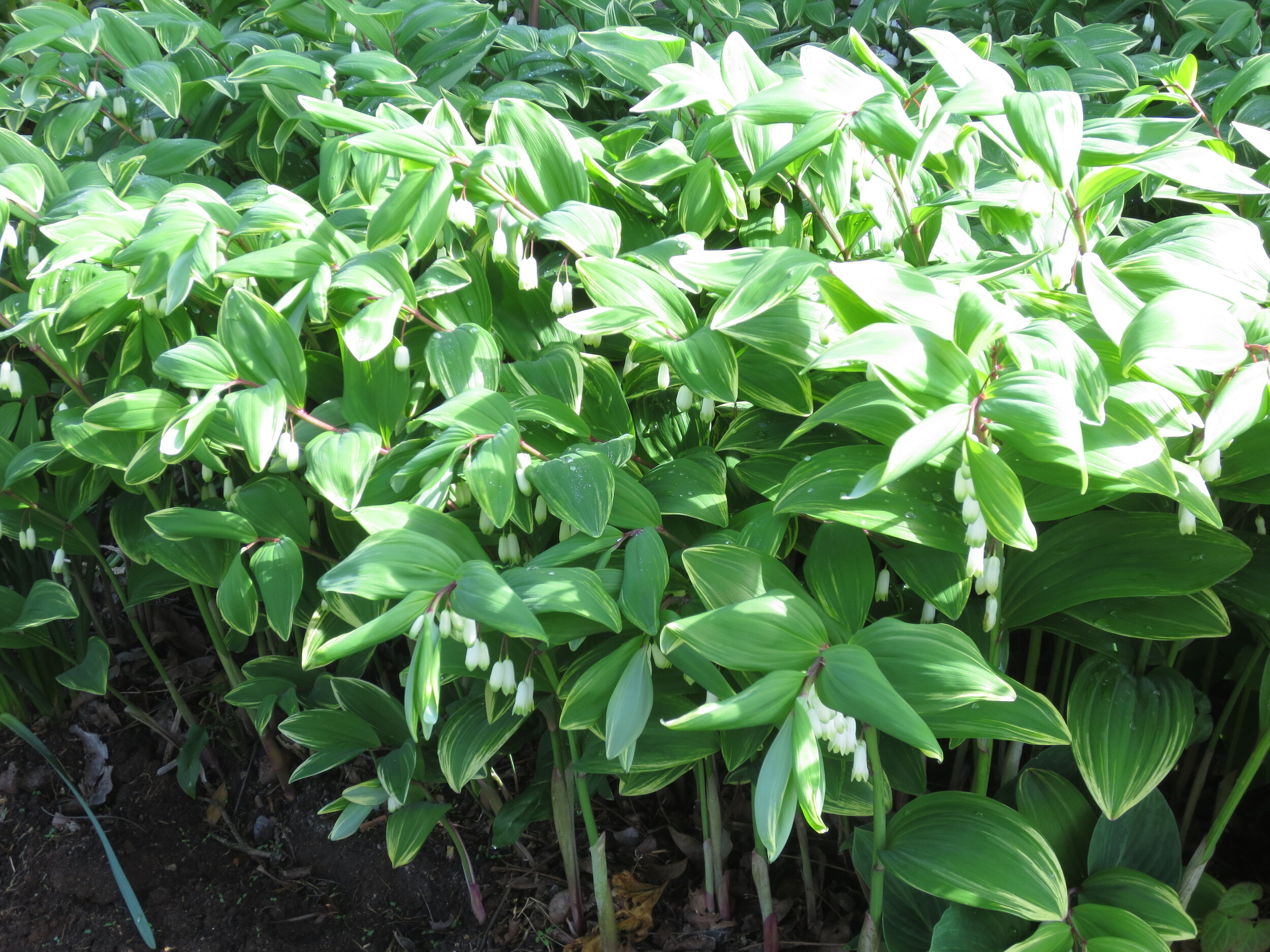Variegated Solomon’s Seal is a top performer in the Mary Snoddy garden. It looks good from the time bulbous, pinkish heads emerge from cold soil in March until dry, frost-killed yellow/tan leaves make whispery sounds in autumn breezes. In late spring, dainty white flowers dangle in pairs from the underside of its curved stems, like tiny white bells. These are described as fragrant, but I have never been able to detect a scent.
We do not normally think of tall plants as being groundcovers, but Solomon’s Seal works well as a carefree soil cover in areas where few other plants thrive. Solomon’s Seal is undemanding. It prefers partial shade and moist-to-wet soil, but survives full-sun exposure at a pond perimeter in my zone 7b garden. Elsewhere, I do not offer supplemental irrigation except in extended dry periods. Plants grown in sun attain only half the height of those grown in partial to full shade. It will also tolerate deep shade. They can be grown in containers, but all stems arch the same direction which may give an unbalanced look.
Plants combine well with ferns and hostas, and look especially great when paired with dark green European ginger, Asarum europaeum.
I am a bit of an evangelist when it comes to Solomon’s Seal. Visitors to my garden often admire the large swaths in my shady beds and woodland areas. Though they are best divided in autumn, I grab a sharp shovel and dig clumps of the shallow rhizomes to share. They spread rapidly enough to disguise the removals within one season. Plants are not bothered by insects and are rarely browsed by (my) deer,
There are several anecdotal explanations for the common name, but none of them appeal to me. Instead, I think the gardener who chooses this plant for their shade garden exhibits the wisdom of King Solomon. Variegated Solomon’s Seal, Polygonatum odoratum ‘Variegatum’ was named as Plant of the Year in 2013 by the Perennial Plant Association.
Solomon’s Seal in bloom
Solomon’s Seal buds pushing up in March

